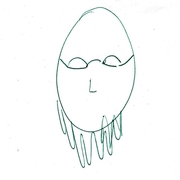Facilitation Quick Tips: Health Pictionary
By Erin Fogarty, PhD (cand.), and Ryan Erbe, PhD (cand.) | October 21, 2014
Here’s an energizer that was used with great success at the 2014 American School Health Association conference this month. The entire closing general session was revitalized with this one, so give it a try when your training needs an energy boost.
Purpose: To energize, engage, add movement, and/or reinforce key concepts or words.
Best used: When groups are transitioning to new content, after lunch, or any time the group needs to be energized!
Steps:
- Before the activity, prepare cards for the game with relevant health terms written clearly in large letters. Choose examples related to the content of the training. Examples: physical activity, healthy relationships, tobacco effects, HIV/STD prevention, stress management, refusal skills, peer support.
- Ask participants to gather a piece of paper and a writing utensil (pencil is best, but anything that writes will do). Put on some music with a good beat.
- Break participants into pairs.
- Explain that this activity is called “Health Pictionary!” Similar to a game some of them may have played, one partner will be the “artist” and one will be the “guesser.” (Everyone will play both roles.) Ask pairs to identify who will be the first artist.
- Explain to the whole group that you will show the artists a card naming the item they will be drawing. Their partner will try to guess what the item is. Artists cannot use words, letters or numbers.
Mini-rules:
- All pairs will start at the same time.
- The first pair to correctly communicate and guess the item wins the round.
- Artists may not say anything when card is shown.
- Call all of the artists to the front of the room and show the first card to them.
- After the artists see the card, ask them to put their hands up in the air (to make sure no one starts drawing before the appropriate time) and do their own “funky dance” back to their seats. They must keep their hands in the air until the music stops. That’s when they can start drawing.
- When everyone is back in their pairs, stop the music and yell, “Pictionary!” Tell them to start drawing. Remind teams not to use words, letters or numbers. The first pair to correctly communicate and guess the topic shouts out “Health Pictionary!”
- Other pairs can continue drawing until the facilitator confirms that the first pair has correctly identified the topic.
- Have partners switch roles and repeat the process with a new topic.
Notes:
- Instead of pairs, you can work with groups of 3 or 4 if you have a larger training, or if you want to do the activity for a longer period of time. You do want to be sure everyone has a chance to play the artist.
- You can post a list of key words and topics mentioned by participants and trainers from the start of the training on butcher paper or white board. These can be some of the topics you write on the cards.
- Be sure to let people know that being able to draw is not a necessary ability in this game. In fact, people who are more experienced as artists sometimes do less well.
Thank you to PhD candidates Erin Fogarty and Ryan Erbe for contributing this activity. Both attend Indiana University and both are responsible for completely energizing everyone in the final general session of the 2014 APHA Conference!




